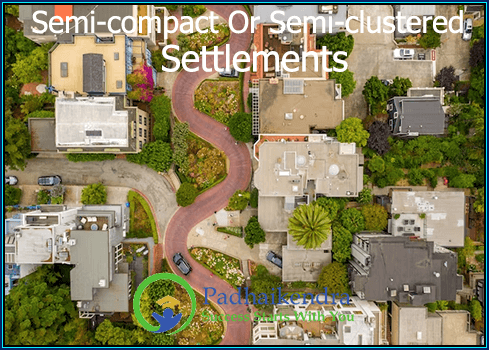Semi-compact or semi-clustered settlements refer to communities that are less densely populated and less tightly clustered compared to compact settlements. This type of settlement pattern is characterized by a mix of clustered and dispersed development, often found in suburban or peri-urban areas.
Some of the key features of semi-compact settlements include:
- Buildings and structures are arranged in a semi-clustered pattern, with some clustering of buildings and some open space or green areas between them.
- Semi-compact settlements have a lower population density compared to compact settlements, with fewer people living in a larger area.
- Semi-compact settlements tend to have a mix of land uses, with residential, commercial, and industrial activities often located close to each other.
- Transportation infrastructure tends to be a mix of private vehicles, public transportation, and pedestrian and bike paths.
- Semi-compact settlements can have a more suburban or rural character, with a mix of built and natural features, including parks, gardens, and water bodies.
- Social and cultural activities tend to take place in private spaces such as homes and community centers, as well as public spaces such as parks and public squares.
- Semi-compact settlements can offer the benefits of both compact and dispersed settlements, including a lower ecological footprint compared to dispersed development and greater access to green space compared to compact development.
Overall, semi-compact settlements can provide a balance between urban and rural lifestyles, with access to amenities and services while also offering a connection to nature and open spaces. To ensure sustainable and inclusive development in semi-compact settlements, it is important to consider factors such as transportation infrastructure, land use planning, and access to basic services such as water and sanitation.





